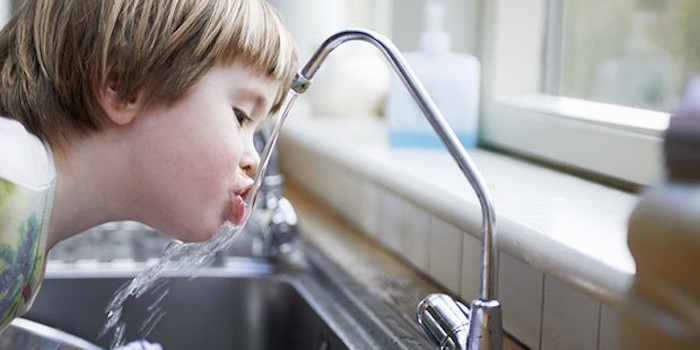Reverse Osmosis (“RO”) Water
Many people who are concerned about their health and that of their family members ask us about alternatives to drinking tap water, whether it be from a municipal source or a well. People have many choices that they can drink and cook with, including tap, distilled, reverse osmosis (“RO”), and a wide variety of bottled water.
Reverse Osmosis drinking water systems provide your family with clean, refreshing water right in your home. We believe it is the right option for our families for the following reasons:
1. Remove Contaminants & Make Water Delicious
People are becoming more and more aware of the negative health effects of contaminated water. Public consciousness has been raised in part due to tragic news reports from Flint, Michigan, where elevated levels of lead in the city’s drinking water were discovered and linked to developmental problems among a generation of young children.
No matter what your source of water is – city or private well – there is a lot more than simply H20 in your water. By installing a Reverse Osmosis (RO) water treatment system in your home, you can drastically reduce unwanted contaminants including but not limited to: lead, arsenic, copper, nitrates and nitrites, chromium, selenium, fluoride, radium, barium, cysts & total dissolved solids.
After removing contaminants and re-mineralizing the water through the Reverse Osmosis process many people, including the Best Water Solutions team, enjoys the flavor much more than other sources of drinking water. This helps to ensure that members of your family drink more water!
If you desire Safe & Pure water, then a Reverse Osmosis drinking system is exactly what you need.
2. No More Buying (and Carrying Home) Bottled Water
Many people who are unhappy with the quality of their tap water get their drinking water from bottles. This has a big impact on your grocery bill and adds to the weight of what you have to carry out of the store and back to your home. Additionally, the plastic bottles have a negative environmental impact as many are not recycled and end up in landfills taking centuries to decompose. Finally, keep in mind that there is very little regulation on bottled water (is that exotically named water *really* sourced from a natural spring in the tropics?). And not all brands are created equal : some contain more contaminants and plastic than others.
The benefit of a Reverse Osmosis system is that it provides Safe & Pure water right in your kitchen – where you need it and when you need it. No more carrying bottles from the store to your home or from your home to the curb to recycle the empty bottles. The system will pay for itself in a short period of time as making a gallon of Safe & Pure water costs pennies.
3. Better Water Makes for Better Cooking
Many of the better restaurants, bakeries, and breweries are using RO water to improve the quality and consistency of the food and beverages that they make. We can learn from what they know! The impurities in your water *do* impact the taste of the food and beverages that you make at home. Our family likes to cook with Safe & Pure water, and we use it to brew our coffee and tea to make it especially tasty.
What’s the Downside of RO Water?
One of the concerns that we sometimes hear from our customers is that Reverse Osmosis systems filter out beneficial minerals in the process of aggressively removing heavy metals and other contaminants. Our response is two-fold: first is a reminder that the human body gets most of its minerals from food consumption – not from water. That said, Best Water Solutions always includes a “re-mineralization” filter with the Reverse Osmosis systems that we install for our customers – so the final product is never stripped down water: you get all the good and none of the bad.
How Does Reverse Osmosis Work?
Reverse Osmosis (RO) systems purify water by forcing pressurized water through a very fine, plastic membrane.
Wells and Private Water Sources:
If the raw water being treated comes from a well, or another private source, disinfection and pre-filters to remove chlorine, particulates, and sediment may be needed in advance of the RO unit to remove contaminants that can foul or damage the membrane.
Stages of Reverse Osmosis:
- During the initial filtration stage, tap water or well water is passed through a particle filter that removes silt, sediment, sand, and clay particles that might clog the RO membrane.
- The water is then forced through an activated carbon filter that traps minerals and contaminants such as chromium, mercury, copper, chloramine, and pesticides. It also removes chlorine, which is important as chlorine will shorten the life of the membrane.
- Water is transferred under pressure into the RO module, allowing only clean water to pass through the small pores in the membrane. Impurities unable to pass through the membrane are left behind and flushed down the drain.
- Treated water is then sent to a storage tank.
- Before consumption, water from the storage tank passes through an activated carbon and calcite filter for re-mineralization, further improving the water’s taste.
- A dedicated water spigot – usually located at the homeowner’s kitchen sink, next to the ‘regular’ tap water faucet – dispenses the Safe & Pure RO water on an as-needed basis. Some homeowners also choose to have the RO water connected to their in-fridge water dispenser and/or ice machine, too.
Call us today for more information on how you can also enjoy affordable Safe & Pure water in your home!

